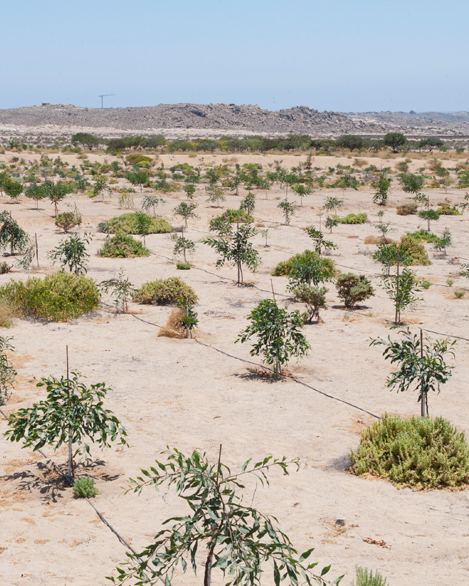
CAP concerns itself with rescuing and preserving the biodiversity of the places in which it operates. To that effect, it makes a responsible use of land and marine ecosystems, respecting and protecting the sensitive biodiversity spaces with which the Group’s companies are linked.
The Group protects a total of 269 hectares of biodiversity-rich areas.
CAP Mineria maintains three biodiversity-care programs, including the reforestation of chañares in community with indigenous peoples of Colla, and nurseries of compromised species, through two action plans are carried out jointly with CONAF in the Copiapo Valley (Cerro Negro Norte work site) and in the Huasco Valley (Los Colorados work site). Noteworthy is the case of CAP Acero, where there is a protected area of 202 hectares that is equivalent to 43% of the entire area of the Talcahuano Plant. The steel company continued its reforestation plan by planting 80 native trees in the neighboring communities and the same quantity in the protected park, within the steel plant’s wetland area.
CAP’s early incorporation of sustainability is indeed a corporate strategic decision. To that effect, the company has multidisciplinary teams that interact on an ongoing basis.
The development of new projects considers incorporating sustainable processes and technologies from the design stage. This was the case in the latest constructed project: the Cerro Negro Norte work site.
Future company projects encompass increased cargo at the ports, eventual cargo transfer operations (transiting from being iron ore ports to multipurpose ports), as well as the construction of new ports. The Cruz Grande Port, for example, already has an approved Environmental Impact Study. Likewise, environmental dimensions shall be duly considered in eventual new mining operations and/ or explorations.
Transportation is an issue that can cause discomfort and impacts in some neighboring communities to the operations. This is particularly true in CAP Mineria, where bulk mineral is mobilized from productive work sites to preparation and processing plants and then to the shipping ports to be finally dispatched on ships for bulk mineral transport. Railway transports from the mines to Huasco and Coquimbo have generated, on occasions, disturbances to the surrounding communities. This is why, historically, measures have been implemented to mitigate such impacts.
In order to minimize the grievances caused by railway transport, the mining company has adopted a number of improvement measures, including: